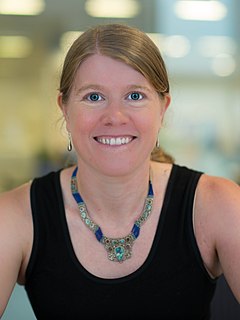Top 93 Quotes & Sayings by Sarah Parcak
Explore popular quotes and sayings by an American scientist Sarah Parcak.
Last updated on April 16, 2025.
If you really want to be a good archaeologist, you have to understand ancient DNA; you have to understand chemical analysis to figure out the composition of ancient pots. You have to be able to study human remains. You need to be able to do computer processing and, in some cases, computer programming.
Itjtawy was ancient Egypt's capital for over four hundred years, at a period of time called the Middle Kingdom about four thousand years ago. The site is located in the Faiyum of Egypt, and the site is really important because in the Middle Kingdom there was this great renaissance for ancient Egyptian art, architecture and religion.
All over the world, we're finding out that, you know, whether it's Egypt or Syria or Central America, what satellites are showing is that there are hundreds, if not thousands, of previously unknown settlements all over the world, and what archaeology does, it helps us to understand this common humanity that we have.
The only technology that can 'see' beneath the ground is radar imagery. But satellite imagery also allows scientists to map short- and long-term changes to the Earth's surface. Buried archaeological remains affect the overlying vegetation, soils and even water in different ways, depending on the landscapes you're examining.





















